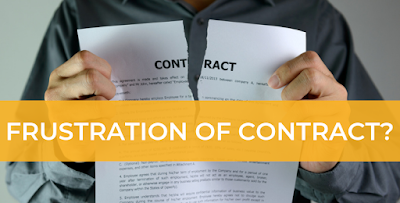Why is the enforcement of the s.33 statutory contract under the Companies Act 2006 so complex?
Introduction
The birth of a company, though arguably not as precious as that of a child, can be a truly special moment in the eyes of the entrepreneur. Sentiments aside, the formation of a company requires certain formalities that will govern the existence of the company throughout its gifted life – such as the requirement for company articles and a constitution.1 The constitution of the company is a vital document that regulates the activities, rights, and duties of those involved within the company.2 Section 33 of the Companies Act 2006 (hereinafter CA 2006) plays a vital part in the constitution’s life in that it states that “[t]he provisions of a company's constitution bind the company and its members to the same extent as if there were covenants on the part of the company and of each member to observe those provisions”. This essay evaluates how the s.33 works to limit the ambit of the company’s constitution. It is concluded that the case law surrounding s.33 and its nuanced predecessor, s. 14 Companies Act 1985, shows that these provisions have not worked efficiently to limit the ability of outsiders to enforce the provisions of the constitution. This area of law must be clarified if the law wants the life of the company to maintain the “magic” experienced at its birth.
The Impact of Section 33 CA 2006
In a typical legal situation, when one is faced with an ambiguous section within a statute, as is s.33 CA 2006, one is inclined to turn to the case law in order to ascertain the interpretation afforded by the judiciary. However, given the substantially contradictory opinions adopted by the various cases on the matter, the case law not only fails to shed any light on the situation but in fact further dilutes any channels of certainty that may have existed.
To look firstly at Eley v Positive Government Security Life Assurance Co Ltd3 where an aggrieved director of a company sued for a breach of contract on the grounds that it had been written in the articles of association of the company that he would be appointed as solicitor of the company, but the company had instead looked to appoint others when Eley was appointed as director. The director’s claim was not allowed on the grounds that he was suing as a solicitor and not as a member of the company. This case gave the impression of a strict interpretation the enforceability of a contract, coherently excluding the rights of third parties. There is convincing argument offered by Lindley LJ in Browne v La Trinidad4 to the degree that it seems wrong to give a member rights upon the ownership of shares which are not connected to the holding of such shares.
However, there is significant and contradictory departure from this in later cases. The case of Quin & Axtens Ltd v Salmon5 illustrates such contradiction. Here, the articles of the company gave a director the power to veto board decisions, when the board ignored this veto and did not change course the director sought an injunction. Under the rule in Eley the director is an outsider and cannot enforce the articles. However, the court held to the contrary and allowed enforcement.
The third major case in this saga is that of Hickman v Kent or Romney Marsh Sheepbreeders Association.6 Asrbury J laid down some firm principles:7
(1) No article can constitute a contract as between the company and third persons.
(2) No article purporting to be given to a third party, for example a solicitor, can be
enforced against the company.
(3) Articles regulating the rights and obligations of the members do create rights
and obligations between them and the company generally.
This was later accepted in Beattie v E. & F. Beattie Ltd8 where it was held that a director being sued could not rely on the protections within the articles which were afforded to members and he was being sued in his capacity as a director and not a member. The matter has also been endorsed by the recent case of O’Neill v Phillips.9
Various commentators have attempted to reconcile the case law, the problem being that most have not paid sufficient attention to the disparate decisions. The first significant comments in this area were given by the late Lord Wedderburn who adopted a comparatively expansive view of the predecessor legislation and held that “each member has a prima facie right to enforce... every provision of the contract found in the articles” [ bold emphasis added] on the condition that he sues in his capacity as a member.10 Wedderburn asserts that Astbury J had failed to consider the previous case law, pre-Eley, which had allowed enforcement as outsiders.11 At the other end of the spectrum is the view offered by Gower who adopts the stricter view afforded by Hickman that outsiders rights under the articles can never be enforced under s.14 CA 1985, the predecessor of s.33 CA 2006.12 A more balanced, less strict, interpretation was afforded by Goldberg who claimed that the members are able to enforce outsiders’ rights in so far as they affect the running of the company through the constitution or are incidental to the running of the company through an appropriate organ.
Clearly the differing opinions of highly respected scholars and academics in the field over such a smaller matter is a concern. The problem is not merely academic; the truth being that it is pertinent in any commercial relationship that the parties are sufficiently clear as to what their duties and rights are and the nature of enforcement available to them.
An interesting contradiction to the case law that has allowed outsiders to claim for a breach of contract under s.33 is the issue of limitation and how this has transpired in the courts. Scanlan and Ryan provide a history of the case law to show that, whilst the constitution of a company constitutes a special contract and has a longer limitation period of 12 years as opposed to 6 by virtue of s.8 Limitation Act 1980, the right to claim is in fact further extended by the presence of continuing obligations.13 They summarise the law to show that continuing obligations exist between members and the company and members inter se, so long as they commercial relationship is in existence and the breach is not one that is incapable of revocation, nullification, or correction, and the 12 year limitation period begins again on every day the contract is not complied with but accrues at the point the breach can no longer be corrected and equally, when members cease to be members the 12 year limitation period becomes fixed and the continuing obligations cease.14 Evidently, the case law in this area, particularly the application of Bell v Peter Brown & Co,15 illustrates that continuing obligations cease in tandem with the commercial relationship, suggesting rights should be limited to the members and not outsiders.
There is also convincing argument put forward by Griffin to suggest that the wider approach taken by Wedderburn may be the one that best fits with the new enactments in CA 2006. Firstly, and quite importantly, Griffin notes that Wedderburn was the member of the House of Lords who was responsible for rewording of s.14 CA 1985 into its new form under s.33 CA 2006, and he would indeed have wished for the wording to reflect his academic understanding and work.16 And indeed Griffin notes that the wording of s.33 CA 2006 is more expansive than the one-sided s.14 that was considerably more onerous on the members than any other party.17 Another reason advanced by Griffin as to why Wedderburn’s interpretation may have been adopted to widen the scope of the constitution’s enforcement is that the section of the CA 2006 allowing for the removal of a director by way of a ordinary resolution18 no longer contains stipulation that a company’s articles could never preclude right of a company to remove a director, something that was present in its predecessor, s.303 CA 1985 – suggesting the directors may be able to rely on contrary statements afforded to them by the articles.
Conclusion
Where a document purports to give rights into the hands of a grantee, it is important that it can be establish the fine details relating to the enforceability of these rights. The company’s constitution is such a document and its articles can purport to confer “rights” on all manners of people, including both the members and “outsiders”. S.33 CA 2006 stipulates that this is a contract but does not go further in describing which parties are enabled to enforce such rights. This lack of clarity has resulted in contradictory case law regarding who is able to enforce and which rights they are capable of enforcing. The ensuing academic commentary attempts to reconcile the case law but does little more than spark a debate and further confusion. The time may have come to give up reconciling the irreconcilable.
1 Part 3A Companies Act 2006.
2 Lorraine Talbot, Critical Company Law, (Routledge, 2008), 63. 3 (1876) 1 Ex. D. 88.
4 (1887) 37 Ch. D. 1, 14-15.
5 [1909] A.C. 442.
6 [1915] 1 Ch. 881.
7 Ibid, 900.
8 [1938] Ch. 708.
9 [1999] B.C.C. 600.
10 Kenneth Wedderburn, “Shareholders’ Rights and the Rule in Foss v Harbottle” (1957) 15(2) C.L.J. 194, 214. 11 Ibid, 209.
12 Professor Laurence Cecil Bartlett Gower, Gower’s Principles of Modern Company Law (4th Ed 1979, Sweet & Maxwell), 317.
13 Gary Scanlan and Chris Ryan, ‘The Accrual of Claims for Breach of Contract Under S.14 Companies Act 1985 and S.33 Companies Act 2006: The Continuing Obligation’ (2007) 28(12) Comp. Law. 367.
14 Ibid, 371.
15 [1990] 3 All E.R. 124.
16 Steven Griffin, “Companies Act 2006 S.33 – Altering the Contractual Effect of the Articles of Association?” (2010) 284 Co.L.N. 1, 3.
17 Ibid.
18 S.168 CA 2006.
Law Tutors Online, UK Law Tutor, UK Law Notes, Manchester Law Tutor, Birmingham Law Tutor, Nottingham Law Tutor, Oxford Law Tutor, Cambridge Law Tutor, New York Law Tutor, Sydney Law Tutor, Singapore Law Tutor, Hong Kong Law Tutor, London Tutors, Top Tutors Online and London Law Tutor are trading names of London Law Tutor Ltd. which is a company registered in England and Wales. Company Registration Number: 08253481. VAT Registration Number: 160291824 Registered Data Controller: ZA236376 Registered office: Berkeley Square House, Berkeley Square, London, UK W1J 6BD. All Rights Reserved. Copyright © 2012-2024.


